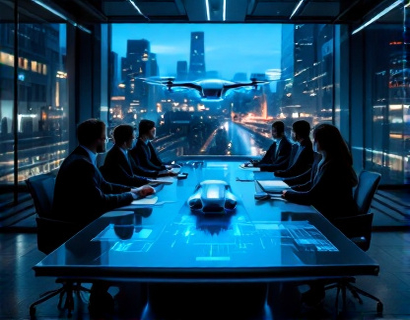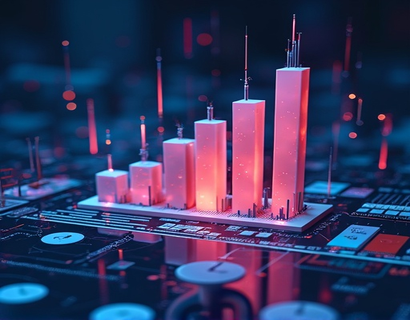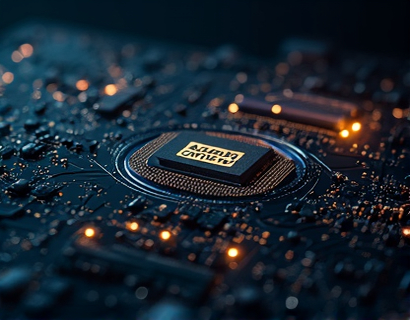Next-Gen Aerospace Innovations: Transforming Efficiency and Safety for Industry Leaders
The aerospace industry stands at the forefront of technological innovation, driven by the relentless pursuit of efficiency, safety, and performance. Recent advancements have revolutionized both aviation and space exploration, offering industry professionals and visionaries a glimpse into a future where the boundaries of what's possible are continually pushed. This article delves into the latest technological breakthroughs that are reshaping the aerospace landscape, providing a comprehensive overview for those at the helm of this dynamic field.
Advanced Materials and Structures
One of the most significant areas of innovation in aerospace is the development of advanced materials and structures. Traditional materials like aluminum are being replaced by lighter, stronger, and more durable alternatives. Composite materials, such as carbon fiber reinforced polymers, are becoming increasingly prevalent due to their exceptional strength-to-weight ratio. These materials not only reduce the overall weight of aircraft and spacecraft but also enhance structural integrity, leading to improved fuel efficiency and extended operational lifespans.
Moreover, the use of additive manufacturing, or 3D printing, is transforming the way aerospace components are produced. This technology allows for the creation of complex geometries that are impossible to achieve with conventional manufacturing methods. By reducing the number of parts and minimizing material waste, additive manufacturing not only cuts costs but also accelerates the production process. For instance, NASA has successfully tested 3D-printed rocket engine parts, demonstrating the potential for more efficient and cost-effective manufacturing in space applications.
Electric and Hybrid Propulsion Systems
The shift towards electric and hybrid propulsion systems represents a paradigm shift in aerospace technology. Electric motors offer several advantages over traditional jet engines, including higher efficiency, lower emissions, and reduced noise levels. In the realm of general aviation, electric propulsion is already making strides, with several companies developing electric aircraft capable of short to medium-range flights. These vehicles not only promise to reduce operational costs but also align with global efforts to minimize environmental impact.
In the commercial aviation sector, hybrid propulsion systems are being explored to enhance fuel efficiency and reduce carbon emissions. By combining conventional jet engines with electric motors, these systems can optimize performance during different phases of flight. For example, electric motors can provide additional thrust during takeoff and climb, where jet engines are most fuel-intensive, thereby improving overall efficiency. Companies like Rolls-Royce and Airbus are at the forefront of developing these hybrid systems, signaling a significant shift in the future of air travel.
Autonomous Systems and AI
The integration of autonomous systems and artificial intelligence (AI) is revolutionizing the aerospace industry. Autonomous drones and unmanned aerial vehicles (UAVs) are already being used for a variety of applications, from surveillance and reconnaissance to delivery services. These systems rely on advanced sensors, machine learning algorithms, and real-time data processing to navigate and perform tasks with minimal human intervention.
In manned aircraft, AI is being employed to enhance safety and operational efficiency. Predictive maintenance, for instance, uses AI to analyze sensor data and predict potential failures before they occur, allowing for proactive maintenance and reducing downtime. Flight control systems are also benefiting from AI, with adaptive control algorithms that can adjust to changing flight conditions in real-time, improving stability and performance. Airlines are beginning to implement AI-driven decision support systems to optimize flight planning, fuel consumption, and crew management.
Sustainable Aviation Fuels
Sustainability is a critical concern in the aerospace industry, and the development of sustainable aviation fuels (SAFs) is a key area of focus. SAFs are designed to reduce the carbon footprint of air travel by lowering greenhouse gas emissions. These fuels are produced from renewable resources such as agricultural waste, algae, and used cooking oil, and can be blended with traditional jet fuel without requiring significant modifications to existing aircraft engines.
Several airlines and fuel producers are already investing in SAF production and testing. For example, Scandinavian Airlines (SAS) has committed to using SAF for all its flights by 2030, and companies like Neste and Honeywell are leading the way in commercial-scale production. The aviation industry's transition to SAFs is not only environmentally beneficial but also economically viable, as the cost of production continues to decrease and demand increases.
Advanced Avionics and Connectivity
The avionics industry is undergoing a digital transformation, driven by advancements in connectivity and data processing. Next-generation avionics systems are equipped with high-bandwidth communication links, enabling real-time data exchange between aircraft, ground stations, and other aircraft. This connectivity facilitates more precise navigation, enhanced situational awareness, and improved air traffic management.
Satellite-based communication systems, such as those provided by companies like Inmarsat and Iridium, are becoming standard in modern aircraft. These systems offer global coverage, allowing for seamless communication and data transmission even over remote oceanic and polar regions. The integration of Internet of Things (IoT) technologies further enhances the capabilities of avionics, enabling the collection and analysis of vast amounts of data to optimize flight operations and maintenance schedules.
Space Exploration Innovations
The aerospace industry's focus on space exploration is driving innovations that extend beyond traditional aviation. Reusable rockets, developed by companies like SpaceX, are revolutionizing access to space by significantly reducing launch costs. The ability to recover and reuse rocket boosters marks a significant shift from the disposable models of the past, making space missions more economically feasible.
In-orbit servicing and maintenance are also gaining traction, with companies like Northrop Grumman and Maxar Technologies developing robotic systems capable of performing repairs and refueling satellites in orbit. These services extend the operational life of satellites, reduce space debris, and pave the way for more sustainable space operations. Additionally, the development of lunar and Mars missions by space agencies and private companies is pushing the boundaries of human exploration, with innovations in life support systems, propulsion, and habitat design.
Conclusion
The aerospace industry is at a pivotal moment, with technological advancements poised to transform efficiency and safety across both aviation and space exploration. From advanced materials and electric propulsion to autonomous systems and sustainable fuels, the innovations being developed today will shape the future of air and space travel. As industry leaders continue to invest in research and development, the potential for further breakthroughs remains vast, ensuring that the aerospace sector remains a hub of creativity and progress.










































